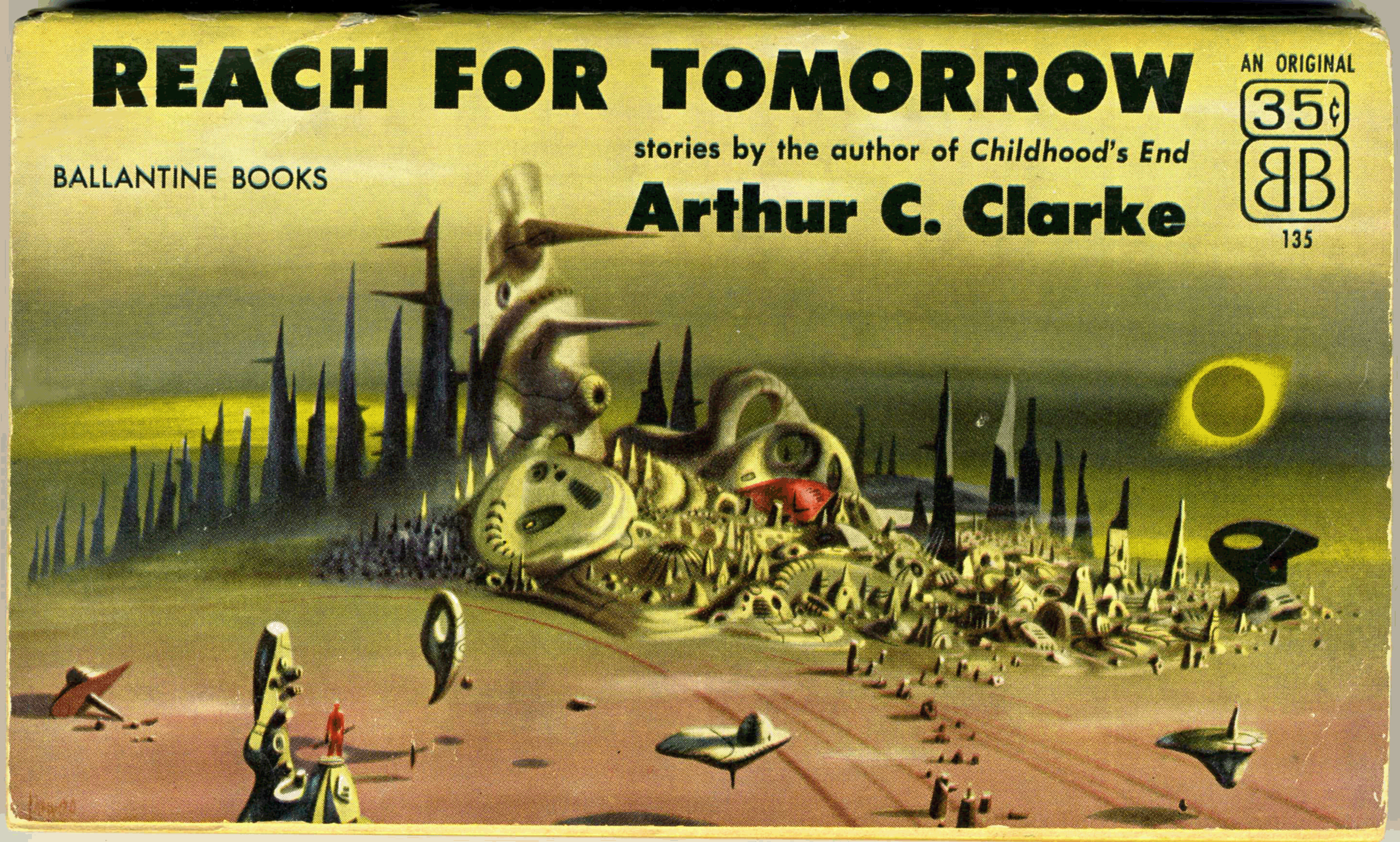From January of 2017, this is one of my earlier posts. Since then, I’ve been able to acquire a copy of Reach For Tomorrow in better condition than my “first”, this newer copy being presented below. Though I’ve used the same scanner (Epson V600, to be specific) to create images of both copies, note the difference in hues between the the covers of the two books.
I’ve also scanned specific areas of the cover at a ridiculously high resolution (600 dpi! – you can see the halftone printing in mesmerizing clarity) to present a larger image in your browser, and to give a better appreciation for the nature of Richard Powers’ art.
Like many of his compositions, the only human presence in this scene is denoted by a solitary, miniscule man: A simple figure in red stands atop a pillar in the left foreground, holding some sort of enigmatic object.
Otherwise, the view includes three floating and one fallen “objects”, another feature common to Powers’ cover illustrations for works of science fiction. Clearly, Powers (and perhaps the art department of Ballantine Books?) seem to have accorded a great deal of forethought and planning in the creation of this unusual cover, which – in terms of originality and impact – is strikingly like that of Ballantine’s 1965 release of Expedition to Earth. Which, along with Prelude to Space, I hope to bring you in a future post.
 Note that the book’s rear cover has a horizontal format identical to the front, and includes illustrations of four other science fiction works by Clarke published by Ballantine. (Childhood’s End, Expedition to Earth, Prelude to Space, and Earthlight.)
Note that the book’s rear cover has a horizontal format identical to the front, and includes illustrations of four other science fiction works by Clarke published by Ballantine. (Childhood’s End, Expedition to Earth, Prelude to Space, and Earthlight.)
Reach for Tomorrow was published by Ballantine in 1970 in a conventional vertical format, with cover art that – while nice – was equally conventional. You can view the later edition here.
Contents
Rescue Party, Astounding Science Fiction, May, 1946
A Walk in the Dark, Thrilling Wonder Stories, August, 1950
The Forgotten Enemy, Avon Science Fiction and Fantasy Reader, January, 1953
Technical Error (“The Reversed Man”), from Thrilling Wonder Stories, June, 1950
The Parasite, from Avon Science Fiction and Fantasy Reader, April, 1953
The Fires Within, from Startling Stories, September, 1949
The Awakening, from Future Science Fiction Stories, January, 1952
Trouble With the Natives, from Marvel Science Stories, May, 1951
The Curse, from Cosmos Science Fiction and Fantasy Magazine, September, 1953
Time’s Arrow, from Science Fantasy, Summer, 1950
Jupiter Five, from If, May, 1953
The Possessed, Dynamite Science Fiction, March, 1953
______________________________
– Cover detail – right –
 ______________________________
______________________________
– Cover detail – lower center –
 ______________________________
______________________________
– Cover detail – lower left –
 ______________________________
______________________________
Reference
Reach for Tomorrow, at Internet Speculative Fiction Database
From original post of January, 2017. A little on the green side, eh?

1/1/18 – 141; 1/29/20 518



